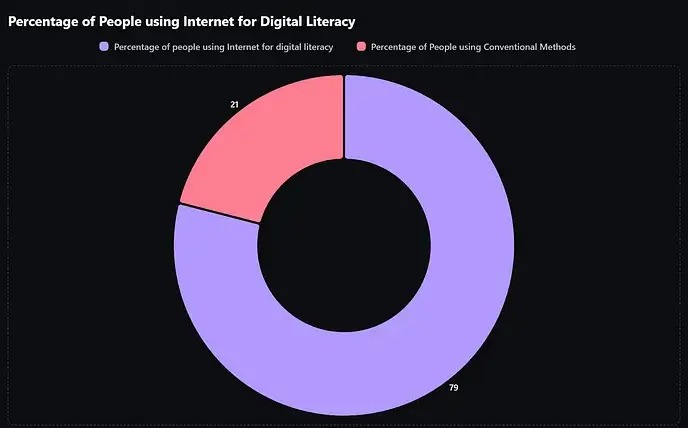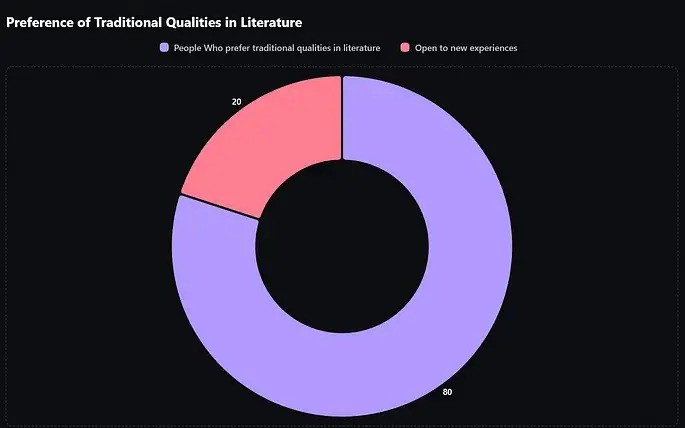

The advent and integration of artificial intelligence (AI) in modern literature presents a myriad of ethical challenges, questions of provenance, and a wide scale impact that reverberates through the entire world of writing, posing a need to strike a balance between leveraging AI to bolster the industry, and the need create regulations and safeguards. While no one demographic is immune to the perils of the digital era vis-à-vis art, it is imperative upon the collective to seek and find solutions that not only address the questions at hand, but creative innovative solutions in light of such a transformative paradigm shift. The following research delves into such a paradigm shift, exposing the current status quo pertaining to modern literature, and a nuanced look into the pros, cons, and potential solutions that may help us as a society to maintain integrity in a digital post-global world.
Firstly, it is of the utmost importance to cite some of the problems in our society stemming from the use of AI, and by extension, social media and general internet usage. According to educators around the country, unprecedented access to the internet coupled with resources such as “Cliff Notes”, “Grammarly”, and a slew of shady websites engaged in the sale of essay papers tailored to an individual’s needs, have created shortcuts galore for those seeking to circumvent the academic process and personal responsibility. The culprit, one might say, is not any single site, but a change in the usage of the internet among younger generations, with Gen Z, and possibly younger Millenials, in the proverbial hot seat. The prominent British giant, The Guardian, addresses this trend candidly. The article, which I have referenced below, cites a figure of ninety percent when referring to colloquial English vernacular, in contrast to formal, standardized English. Be it the use of slang or emojis, the evolutionary trajectory of the use of the English language is headed in an abysmal direction, and in spite of this the aforementioned resources only serve as a crutch for those without a solid linguistic foundation. Furthermore, the questions of provenance as to writing samples produced by third parties or AI are at best, a gray area. ChatGPT, for example, has been mentioned in peer reviewed, scholastic articles and online news publications alike as a problematic entity when it comes to academic integrity and intellectual property rights. For the purposes of creating templates, brainstorming, and gathering talking points for one’s writing endeavors, the platform serves as a sound tool, but for the more nefarious among us, it is nothing more than a cheap shortcut, or even an outright plagiaristic act.
Now that some of the issues pertaining to AI and other online resources have been addressed, it is important to garner a better understanding of the boon of the digital age, in contrast to the bane. A Carleton University tech article recently provided an assessment on digital equity and accessibility, and rather than lambast AI, it praises AI’s ability to correct, improve, and map students’ writing patterns. In this sense, ChatGPT and Grammarly can be looked upon in a positive light, and with the right guidance, at the behest of parents, educators, and society at large, they can truly be the transformative force they are heralded as, be it for the struggling student or budding entrepreneur. Now, as both the pros and cons of the ethical dilemma have been broached, what does the future of writing yield?
All in all, the metrics used to understand this phenomenon are still in their infancy, and while clearly modern literary standards must adapt to the digital era, there is still some doubt as to the direction that post-digital literature should take. Rather than rattle off information in the form of statistics, it is perhaps best to view this information through graphical charts. After thorough review of the following charts, it becomes clear that the disconnect lies in the fact that while most people use the internet as a primary means for learning, readers or persons interested in literature prefer the conventional analogue traits of the discipline, meaning that the latter is most likely to be affected in coming years, as the first graph moves toward complete digital literacy. While this does not answer the long standing question of what the future holds for ethics in literature going forward, or even the solutions in the works, it does provide a framework of how various segments of society perceive these issues, and that, for the time being, must suffice if we are to work towards a nuanced and tempered approach to modern literature in the digital age, something that is still to engulf us all.

